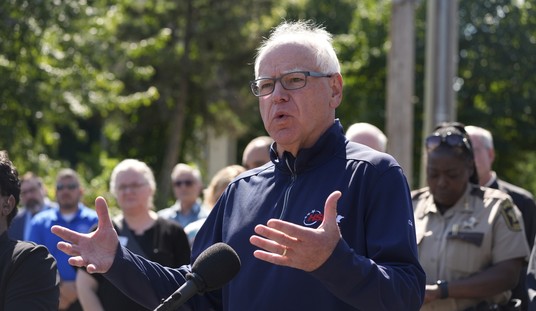As I'm continually pointing out, we solve today's problems with tomorrow's technology. Nowhere is that more true than in the realm of energy, where breakthroughs in a wide range of areas from natural gas recovery to nuclear power are changing and improving America's energy portfolio. Nuclear power in particular is making some great progress, with such things as Small Modular Reactors (SMR) and molten-salt reactors making fission power cleaner, more reliable, and safer.
Fusion power, though, has for decades now had wags pointing out that a practical commercial fusion reactor is still 30, or 40, or 50 years away, and always will be. But one startup, Helion Energy, has now started production on what they claim will be the first practical commercial fusion power plant.
In another sign of fusion energy development’s quickening pace, Helion Energy, a startup with $1 billion in private funding, announced Wednesday it has commenced construction of its first planned power production reactor.
The Washington state-based company said the site work keeps it on track to deliver electricity within three years to Microsoft under a 2023 purchase agreement, and “one step closer” to realizing the vision behind its unique fusion energy technology, said David Kirtley, Helion co-founder and CEO, in a statement.
Microsoft Chief Sustainability Officer Melanie Nakagawa, noting that “the path to commercial fusion is still unfolding,” said the company was proud to support Helion’s pioneering development.
Helion is one of three developers to amass $1 billion in investments, according to the 2025 annual report by the Fusion Industry Association. The company is aiming to build the first U.S. power plant to harness fusion energy for the grid at a site in Malaga, Washington, which is roughly halfway between Seattle and Spokane.
Yes, you read that right; Helion's reactor is privately funded, and that's how it should be. If the new reactor works, it will yield huge rewards for investors. If it doesn't work, a lot of people are going to lose a lot of money, but that's what happens when one invests in new technologies; there's a risk factor. Microsoft, in this case, seems to think it's a good bet.
What's interesting about Helion's reactor is how it is expected to generate electricity. Most of the designs I've seen for fusion plants generate electricity in much the same way as fission reactors, by heating water (or some other solution) and using it to drive turbines. That's a messy, inefficient process, but Helion seems to have a better idea:
Helion aims to use superheated fuel to produce fast-pulsed reactions that rhythmically change the surrounding magnetic field, directly generating electricity. The approach, if mastered, would eliminate the need to contain and convert fusion heat into much lower temperatures in order to power turbines, as required in more common strategies, said University of California, San Diego, professor Mike Campbell.
Helion completed construction of its Polaris reactor prototype at the end of 2024, and hopes to demonstrate electricity from fusion from that reactor as soon as this year, said Helion’s director of communications, Jessie Barton.
I will admit to not quite grasping how that will work, but then my background is in biology, not physics. But we do know that a changing magnetic field can generate electricity; that's how alternators and generators work, by use of the electromagnetic induction principle, in which an electric current is generated by moving a wire next to a magnet. This is one way to convert mechanical energy to electromagnetic energy, although it's not clear precisely how the Helion reactor will make this happen.
Read More: Could Artificial Intelligence Drive New Breakthroughs in Fusion Power?
Gov't Research Lab Claims Practical Fusion Power by 2040 - How Will Climate Scolds React?
That is, of course, if they can make it work at all. Yes, they've started building what they claim will be a commercial, grid-scale fusion reactor plant. But in this, you can count me firmly in the "I'll believe it when I see it" camp.
The Trump administration's energy agenda includes a push for more fission reactors, but the reaction towards fusion reactors has been tepid, at best. That's as it should be. Helion, again, is privately funded, and that's how risky, cutting-edge technologies should be developed. Gather investors, convince them of viability, and if the new technology works, people get rich.
We solve today's problems with tomorrow's technology. Fusion is still tomorrow's technology, and likely will be for some time. But if - when - a practical commercial fusion plant does come online, it will be a game-changer, the next big jump in energy density with a reliable, clean source. That means the climate scolds will probably oppose it, but a breakthrough like this will have a lot of people ignoring the scolds. And that, too, is as it should be.















